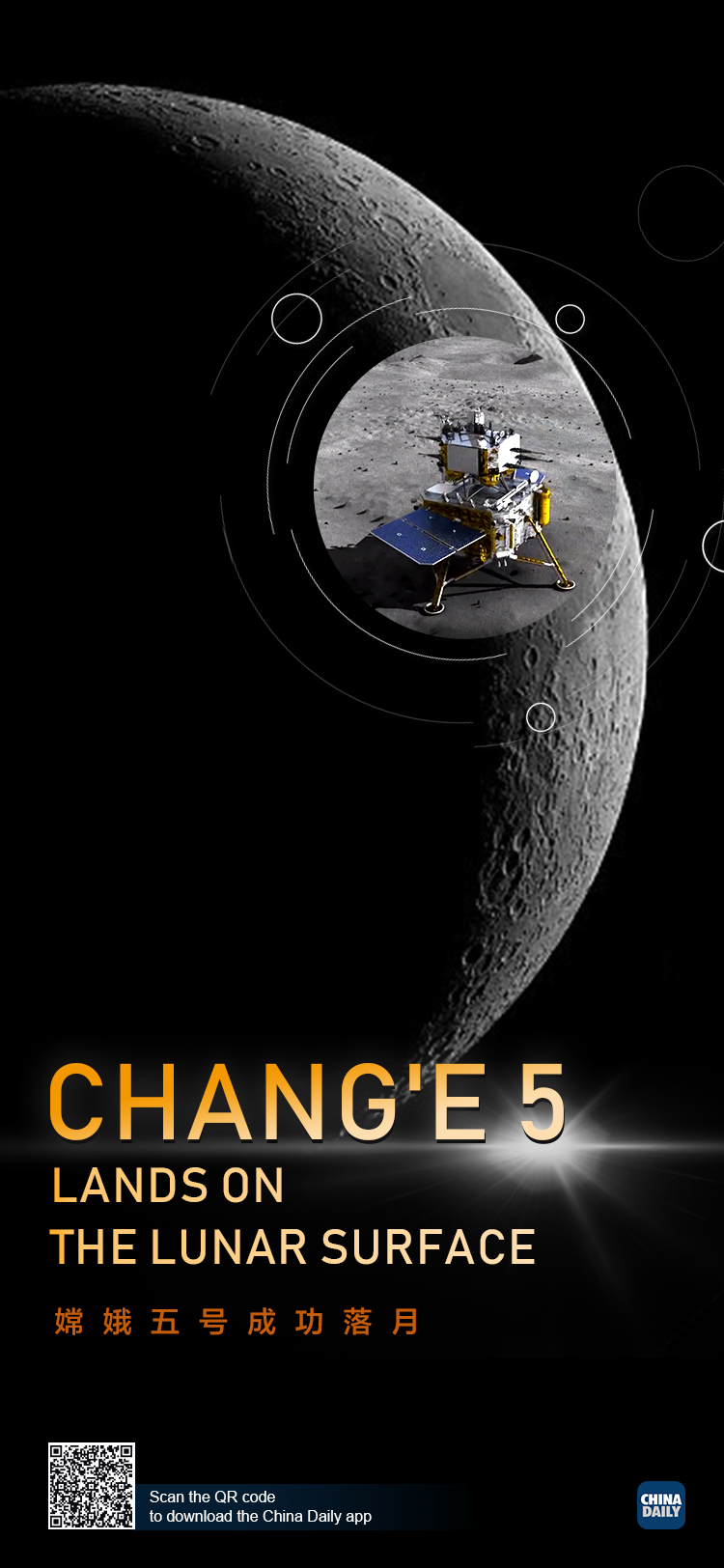Chang'e 5 lands on moon, starts work on surface
Country's largest, most sophisticated robotic lunar probe is on mission to collect rocks, soil
At the climax of a landmark mission, China's Chang'e 5 robotic lunar probe has started gathering lunar rocks and soil after landing on the moon late on Tuesday night.

Chang'e 5 is expected to work for about two days in a region to the north of Mons Ruemker, a mountain overlooking a vast lunar mare called Oceanus Procellarum, or the Ocean of Storms, on the western edge of the moon's near side. After the surface operations are completed, it will bring about 2 kilograms of lunar samples back to Earth in mid-December, 44 years after the last substances from the moon were brought to Earth, according to the China National Space Administration.
As the landing procedures began at 10:57 pm, the lander-ascender combination of the 8.2-metric ton Chang'e 5 started its engine to reduce its flying speed and began to descend toward the moon from about 15 kilometers above the lunar surface.
When the lander-ascender reached an altitude of 2.5 km, it conducted a rapid positional adjustment and continued approaching the lunar surface.
During the engine-assisted process, cameras on the lander-ascender took pictures of the landing site and transmitted them to computers to identify possible hazards on the surface, such as large rocks, so the craft could maneuver to avoid them.

The lander-ascender suspended its descent when it was about 100 meters from the moon and hovered for a short time to carry out accurate detection of obstacles before continuing to descend at a slower, steady speed.
At the last moment of the challenging operation, when the craft was several meters above the surface, its engine stopped and the craft touched down on the lunar surface at 11:11 pm, becoming the third spacecraft to successfully land on the moon in the 21st century. The other two that had achieved this feat were also from China-the Chang'e 3 and 4.
After landing, it embarked on tasks such as using a technically advanced drill to retrieve rocks from 2 meters beneath the lunar surface and a mechanical arm to gather soil from the surface.
China's largest and most sophisticated lunar probe, Chang'e 5 was launched by a Long March 5 heavy-lift carrier rocket on Nov 24 at the Wenchang Space Launch Center in Hainan province, undertaking the world's first mission since 1976 to bring lunar samples to Earth.
Before landing, Chang'e 5 separated into two parts-an orbiter-reentry capsule combination and a lander-ascender combination-early on Monday morning.

While the lander-ascender conducts surface operations, the orbiter-reentry capsule will travel in a lunar orbit at an average altitude of around 200 km above the moon, according to the space administration.
After the collection and packing operations are completed, an engine on the ascender will lift it to rendezvous and dock with the reentry module. It will transfer the lunar samples to the module and then separate from it.
The orbiter-reentry capsule combination will then return to Earth's orbit, where the pair will separate and the reentry capsule will conduct a series of complicated maneuvers to return to a preset landing site in the Inner Mongolia autonomous region in mid-December.